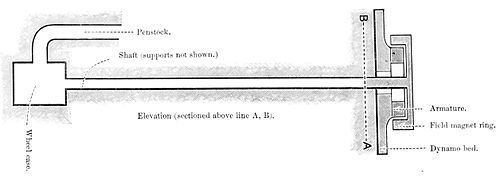body, and is the same for all situations or conditions of the body, we shall see that self-induction has but a very faint likeness to it, for self-induction is a property of a conducting path or circuit, and not at all of the current. To dip lightly into the theory of the phenomenon, we may say that the inception or the stoppage of an electrical flow in any conductor involves the starting up or stoppage of a movement in the dielectric medium surrounding the conductor. The time requisite for this movement to start up or stop gives a perfect analogue to mechanical inertia. If, now, we have a circuit consisting of a wire returning on itself, the two halves being as close together as they may be without touching, we see that a flow starting up in this wire means a current in each half in opposite directions. For the present it suffices to say that the effect above referred to of the starting up of a movement in the surrounding medium is rendered less and less by the canceling effect of the opposite electrical flows the nearer the two halves of the circuit are brought together.
The evil effects of self-induction are directly proportional to the number of alternations of the current in a given time, and consequently the twenty-five-period current adopted for the Niagara Falls work is highly advantageous from this point of view.
The so-called "skin resistance of an alternating-current circuit is, in brief, due to the fact that an alternating current penetrates only a short distance into

Fig. 8. Wheel Case, Shaft, and Dynamo.
